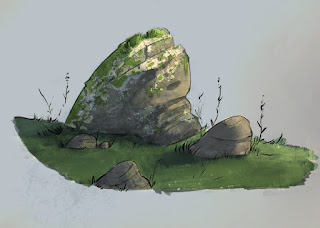Wednesday, March 30, 2016
Another tapestry in context
Made the tapestries narrower to match the size in the boards, but now the width is similar to that of the pillars, which are also red. I'll keep working on it.
Tapestries in context
Blocky-ness of the top half seems kind of overdone to me, but I like the red
The yellow isn't really my favorite, but I like having a bunch of individual tapestries instead of one big one
I like the red better, but definitely need to make the tapestries way narrower, tho.
Tried with skinnier tapestries commonly found in Buddhist temples. I like the narrowness but the detail might be too much.
Costume Design for Ten
I have a friend who does costume design, I asked for her thoughts on Ten's outfits, and this is the responce she gave me. More of her work can be found here: http://www.kgleave.com/
So here's what I've got. Let me know if it's totally not helpful at all. :) As far as garments go, this is a pretty simple one.
Front View: Seams are highlighted in yellow.
The seam along the under-arm and side would go all the way through the colored band at the sleeve hem. But the seam along the top of sleeve and shoulder would stop before the colored band. The Mandarin collar would have a seam where it meets the rest of the tunic. Because the right half of the garment overlaps the left, I would add a small shadow (where the green lines are). Nothing too drastic, just enough to show that it's an overlap, not another seam.
Back View:
Pretty much the same as the front. Clothing before 800 AD stayed pretty simple. :) The sash he wears over his tunic would have no seams. Traditionally, it would be folded over and tucked in, so it appeared to be one continuous band.
Side View:
The pants would have seams along both the outside and inside of the leg (think jeans). There would also be some pretty interesting things happening seam-wise in the crotch area, but I don't know how much attention to want to draw to that. :) I would just join the two inner leg seams when they meet, and leave it at that. There wouldn't be a vertical seam (like where the zipper is on jeans). That's not going to be figured out for several hundred years.
I would suggest cheating the side seams on the pants toward the back a bit. If the seams on the tunic and pants line up exactly, it'll look like a jumpsuit. Keeping them separate will emphasize that it's two different garments.
Fabrics:
Traditionally, silk was reserved for the upper class of China. Monks and anyone of medium-low social rank would wear hemp, or rough cotton. Because fabric was always woven to each person's specific measurements, there wouldn't be any visible hems or stitching. You can see how the fabric made on a loom just sort of ends nicely, where the cut fabric has to be folded and stitched so it won't fray. 
Here's a close up of some hand woven hemp:
Colors:
Fabric dyes of this era were made mainly of plants. The red would have been dyed with Munjeet root, and the yellow with Tumeric (if you're looking for exact color references).
Those are the basics. Let me know if you're looking for anything else. :)
Monday, March 28, 2016
General Tso Redline/Notes
Saturday, March 26, 2016
Initial Robe Simulation
Aw yiss - Cloth sim.
This is an early test with a "Hero" (Fully Modeled) robe wrapped to a simpler, simulated robe.
So yeah:
Fake Ten Render
Kendal found a commercial that has a character with similar proportion to Ten, so I did a paint over to see if Ten's facial features actually work in 3d.
original
ten
Friday, March 25, 2016
Thursday, March 24, 2016
Wednesday, March 23, 2016
Final(?) Statue shading guide
Progression of decay (dial room statue gets the moss, but is the newest statue since it's Jampa)
Use greener moss for shading rather than brown moss for Jampa's statue.
The other statues will have increasing dirt and decay as they get closer to the dial, but no moss.
The other statues will have increasing dirt and decay as they get closer to the dial, but no moss.
More statue matte progress
Subscribe to:
Comments (Atom)











































